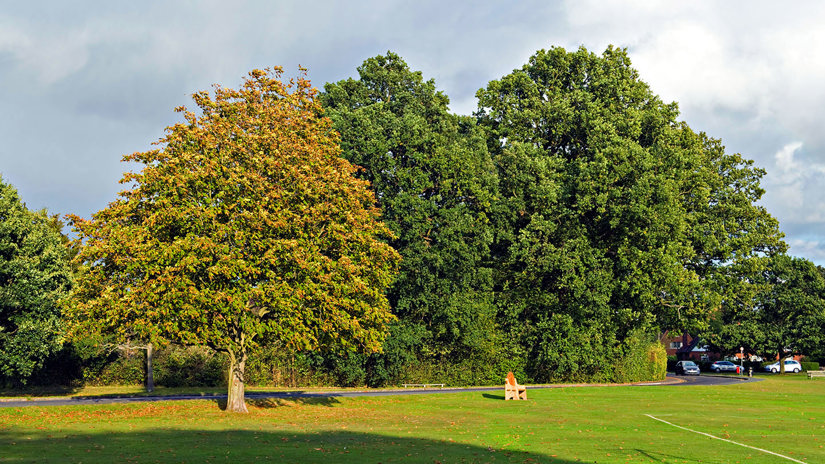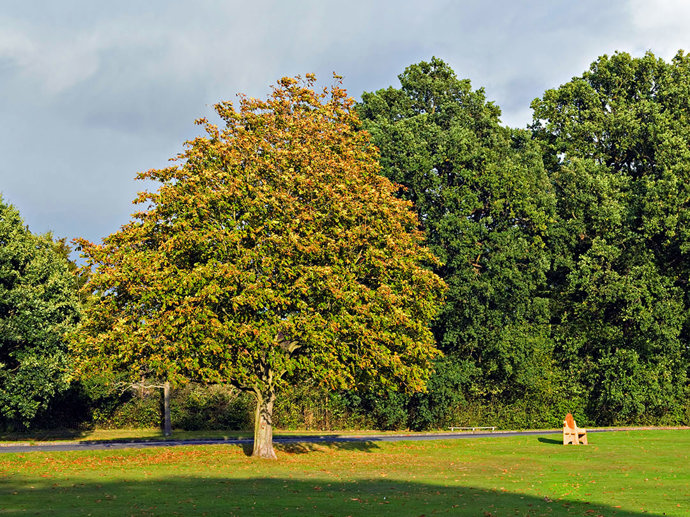Common name: horse chestnut leaf miner
Scientific name: Cameraria ohridella
What does it affect?: horse chestnut and its hybrids
Areas affected so far: across the UK
Origin: south-eastern Europe
The larvae of the horse chestnut leaf miner bores within horse chestnut leaves, eventually causing them to drop and harming the tree and leaving it vulnerable.
Common name: horse chestnut leaf miner
Scientific name: Cameraria ohridella
What does it affect?: horse chestnut and its hybrids
Areas affected so far: across the UK
Origin: south-eastern Europe
Symptoms include:
The horse chestnut leaf miner is the larvae of the moth Cameraria ohridella. The adult moths are tiny at about 4-5mm in length. They are a rich brown colour with bright white chevrons edged with black.
In early summer, the adult female lays up to 180 eggs on newly opened leaves. The hatched larvae feed on the leaves, going through several growth stages where it will grow from 0.5mm to 3.5mm. The larvae then pupate and can overwinter in the leaf litter until they emerge as adults in early spring to lay eggs on that year’s fresh leaves.

Credit: Patrick Nairne / Alamy Stock Photo
When infestations of horse chestnut leaf miner build up, all of the leaves of the infected tree can become brown and shrivelled as the larvae eat all of the inner leaf material. Over years of sustained infestation, the tree can become weakened.
So far, the horse chestnut leaf miner has spread from England to Wales and more recently into Scotland as far as the central belt.
The first horse chestnut leaf miner record in the UK was taken in 2002 in England. The moth probably originates from natural stands of horse chestnut in its native southern Europe and it was first seen attacking trees in the 1970s.
It has since spread quickly, likely through the accidental transport of pupa in dead leaves and leaf litter, and through the transport of moths in vehicles. Some of the bigger jumps in populations have been attributed to imports of infested horse chestnut saplings.

Credit: Naturepix / Alamy Stock Photo
While it doesn’t kill trees, years of leaf miner infestations can leave horse chestnuts weakened. This can leave the trees in a vulnerable state where they are more susceptible to diseases like horse chestnut bleeding canker.
There’s no getting rid of this pest either; there might be fluctuations in populations but it’s here to stay.
To combat the spread of pests and diseases like horse chestnut leaf miner we have:


We are fighting back against pests and diseases. Find out what we're doing to prevent the spread and protect the UK’s trees.